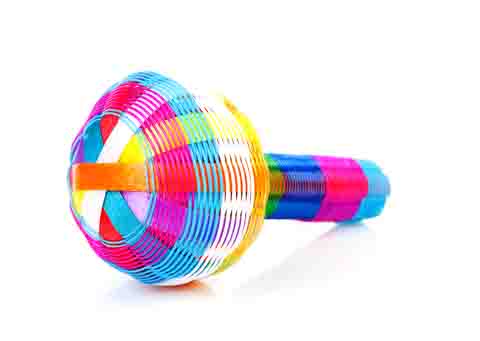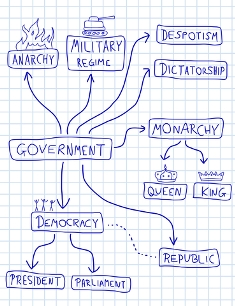Multisensory Learning
Quick Facts about Multisensory Learning
|
 See, hear, touch and move |
Not Just a Song and Dance
Have you ever danced in mathematics, sung a song in science or painted in phys. ed? If you have, then you know a bit about multisensory learning. This creative kind of teaching doesn't have to be that unorthodox, since counting on your fingers is multisensory, but it definitely goes beyond the traditional approach to education that relies almost exclusively on vision (reading text) and hearing (listening to the teacher talk). For the dyslexic learner, it's an approach that should be fully explored.
Multisensory learning taps into our visual, auditory and tactile senses plus motion (kinesthetic) though sometimes the last two are lumped together. Multisensory teaching approaches that incorporate taste and smell are rare outside of wine tasting and cooking courses, but we would be keen to sample any reading program that involves food.
Below is a short description of some of the kinds of techniques that fall under each of the learning strands.
Visual Techniques
|
The use of vision in teaching runs from the reading of text to the richest of the visual arts. Painting, posters, video, really any creative visual design element used to teach. For example a brainstorming session about government that results in a visual map linking the ideas of democracy and monarchy and other forms of government can be a very effective outline for a future written research paper or poster. Visual aids can also help supplement auditory or tactile learning by for example, representing musical notes on paper or through pictures of how to sew or knit. |
 Idea mapping can be a very |
Auditory Techniques
Dyslexic author and champion Ben Foss is fond of distinguishing "eye reading" from "ear reading" which we think is a great idea, because your can indeed read with your ears using audiobooks and text to speech applications. And with practice, you can listen at very high speed.
Literacy does not depend upon reading text in books. This point just can't be emphasized enough with dyslexic learners, so here it is again: Literacy does not depend upon reading text in books. Got it? Good.
Specific examples of auditory learning include the use of music, singing, rhymes, audio tones, lyrics, clapping and dialogue, anything that involves the ear.
Tactile Techniques
Vocabulary
The word kinesthetic has it's origin in the Greek word 'Kinein', which means to to move.
Kinesthesia is the sense that detects your body's position, weight or movement. Sometimes referred to as muscle sense.
Anything involving touch is tactile learning. Often overlapping with kinesthetic learning, tactile teaching techniques are more likely to engage fine motor skills.
Specific tactile techniques include the use of letter tiles, coins, dominoes, poker chips, sand, raised line paper, textures and finger paints. Small puzzles such as the rubik's cube also involve tactile learning. Finally, modeling materials such as clay or plasticine make for good tactile learning media.
Kinesthetic Techniques
 Kinesthetic learning is sometimes |
Kinesthetic learners learn by through motion and doing, using both fine and gross motor skills. Though sometimes also called tactile learners, we like to distinguish between the two because motion and touch are not one and the same. Kinesthesia is the sense we use to learn sports and physical activities, from walking to golf to dance. Children with dyspraxia typically have weak kinesthetic skills. One common kinesthetic teaching method used with dyslexics is 'air writing' wherein students say a letter out loud while simultaneously writing it in the air, a technique dating back to the early days of Samuel Orton. The same exercise can be done in sand or with plasticine. But really anything that connects body movement to learning is kinesthetic from jumping rope to clapping in rhythm to teaching long division math. |
Finding Activities
Not sure how to apply multisensory techniques or looking for more inspiration? Check out this site for helpful multisensory reading activities.
Final Thoughts on Multisensory Learning
Multisensory learning provides more ways for understanding new information, more ways to remember it and more ways to recall it later. Dyslexic children typically have difficulty absorbing new information, especially if it is abstract or involves memorizing sequences or steps. Multisensory teaching techniques help break down these barriers to learning by making the abstract more concrete, turning lists or sequences into movements, sights and sounds.
The best part of all is the multisensory learning is more fun and works well for every learner. It should be part of every teacher's tool box.
Return to the top of Multisensory Learning
- Home ›
- Orton Gillingham ›
- Multisensory Learning
Photo Credits:
Colorful Baby Rattle Toy: © Sandra Van Der Steen | Dreamstime.com
Political Systems: © Tupungato | Dreamstime.com
New! Comments
Share your thoughts or ideas! Leave us a comment in the box below. You can post it at this site only or on Facebook too, it's up to you.